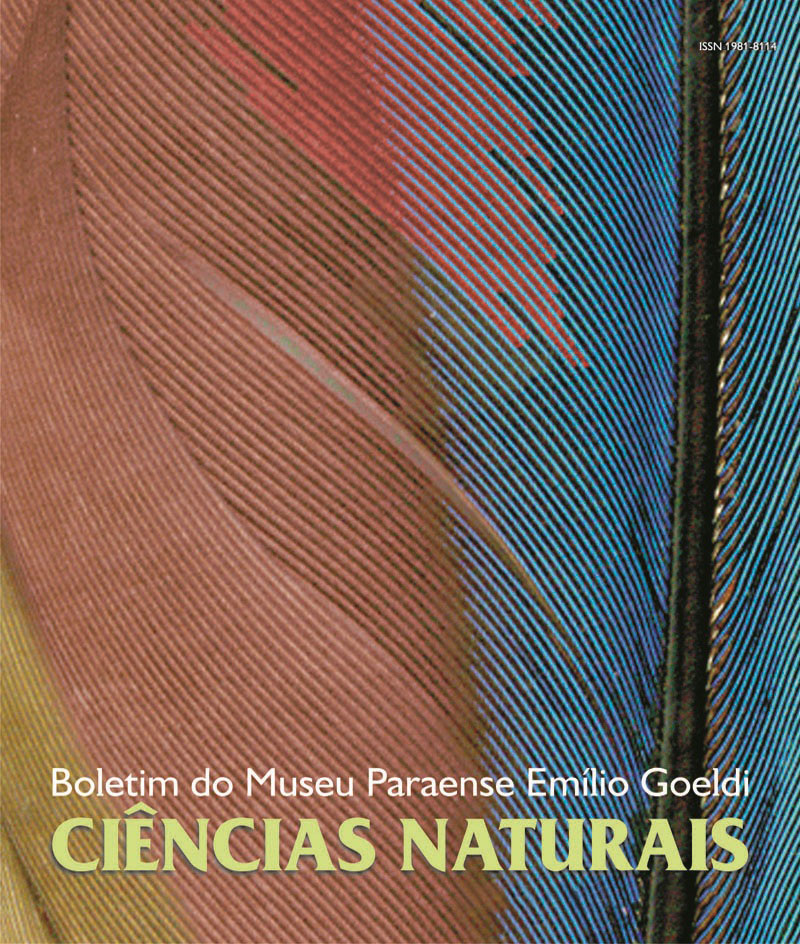Floristic composition and structure in one hectare of terra firme forest, Caracaraí, state of Roraima, Brazil
DOI:
https://doi.org/10.46357/bcnaturais.v2i2.702Keywords:
Floristic composition, Structure phytosociology, Terra firme forest, Brazilian AmazonAbstract
A quantitative floristic and phytosociological inventory in a 1 ha of terra firme forest were conducted in the region of the lower rio Branco (01°01’43”S, 62°05’21”W), Roraima, Brazil. This study included trees, lianas and hemiepiphytes with DBH > 10 cm. The average height of the forest was 16,63 m, with canopy trees of 58, 48 e 47 m. The plot had 544 individuals, 194 species, of which five were represented by lianas and two by hemiepiphytes. The richest families were Leguminoseae, Cecropiaceae, Burseraceae, Chrysobalanaceae and Moraceae. The richest genera were Pourouma, Inga, Licania, Protium e Pouteria. The species with highest densities were Clathrotropis macrocarpa, Bocageopsis multiflora, Eschweilera coriacea, Euterpe precatoria, Inga alba, Pourouma cf. tomentosa subsp. apiculata. A total of 17 families and 76 genera were represented by only one individual; 40 genera and 104 species by only one individual. The families with the highest important value (IV) were Leguminosae, Cecropiaceae, Lecythidaceae, Annonaceae e Arecaceae. The highest IV for the species was found in Clathrotropis macrocarpa, Goupia glabra, Bocageopsis multiflora, Eschweilera coriacea, Euterpe precatoria. The basal area was 26,35 m2. The Shannon index (H’) found was 4,66 and the equitability (J) 0,88. This region, which is localized between the rivers Branco and Negro, is said to have been poorly studied with respect of the flora but of probable importance. The data and information presented shows the floristic importance of the forest of terra firme in this area and looks forward to provide tools that will allow to compare this study with similar ones carried out in the Amazon.
Downloads
Published
Issue
Section
License
Publication means fully assigning and transferring all copyrights of the manuscript to the journal. The Liability Statement and
Assignment of Copyrights will be enclosed with the notice of acceptance. All the authors must sign the document and return it to the journal.






